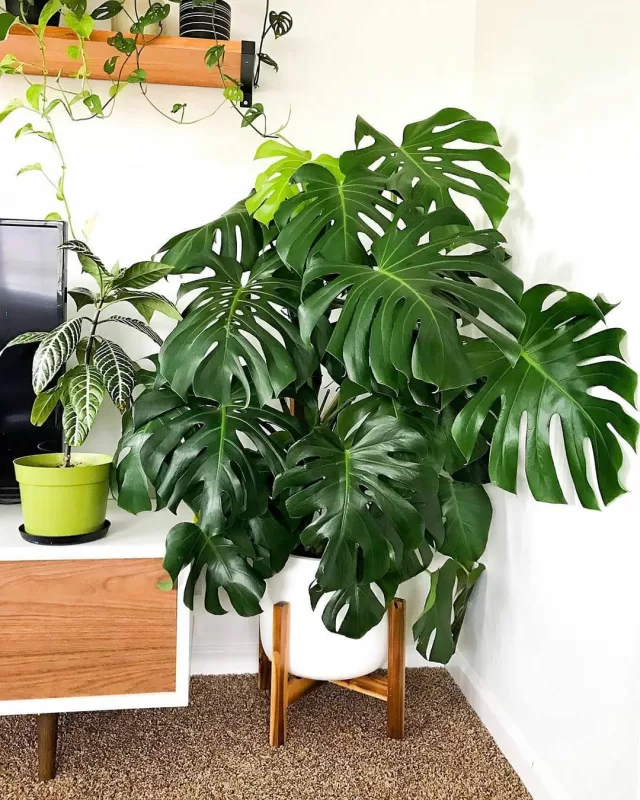The Monstera genus can be further broken down into 50 species one of which is the Variegated Monstera. This Monstera species can be identified by its patches of color, usually white or light green, on both leaves and stems.
This discoloration is due to abnormal plastids in place of normal and healthy chloroplasts, making them extremely rare in nature. This rarity is the main reason for the plant’s rises in popularity, offering owners a unique addition to their home gardens. We will take a deeper look into the plant, its care, and answer the most frequently asked questions.

What is variegated Monstera?
Normally, plants contain chloroplasts which aid in activating their digestive cycle, photosynthesis. This chlorophyll pigment, which attracts light from the sun, is what transmits the bright green color typical of plants and leaves.
Variegated, meaning multi-colored, plants are generally identified due to a mutation in the chlorophyll, one that can be genetically inherited or occur randomly during the process of gene assortment. This mutation causes deformed chlorophyll molecules to absurd light at a much lower rate resulting in slower growth and a lack of green pigment. Instead of reaching its full leafy green potential, leaves and stems will display patches of light green, white, and yellow. This mutation creates beautiful and unique markings that are the cause of their new and widespread title as the most desired houseplant.
How do you care for a variegated Monstera?
Variegated Indoor Plants are easy to care for requiring only minimal maintenance. Native to Panama and Mexico, they strive in tropical climates with lots of sunshine.
- Light – Monstera generally absorbs light at a slower rate and therefore take longer to grow. They photosynthesize slower due to the abnormal chlorophyll, making it crucial that they’re exposed to plenty of sunshine.
- Water – They need plenty of water to keep moist, especially with so much exposure to the sun. The amount of water varies with size usually requiring weekly watering when indoors. It is recommended to first check the level of moisture of the soil before giving any to the plant. When watering, it is important to keep it moist without flooding, checking the consistency of the soil as water is added.
- Temperature – Warm humid environments are ideal to grow the plant to its maximum potential and keep it healthy in the process. It is best to directly expose them to sunlight in a place with free-flowing air.
Also Read: 6 Ways of Making Your Home Green
FAQ
Q1. Can you grow variegated monstera from seed?
Yes, seeds for all species are readily available and take on average 10 – 14 days to germinate in healthy conditions.
Q2. Is monstera toxic to cats?
The species is toxic to cats and can cause vomiting and sores around the mouth when and if ingested. Cat parents should use caution and take measures to keep the plant out of reach and study signs and symptoms of ingestions.
Q3. What’s wrong with my Monstera leaf yellowing?
This usually indicates a lack of nutrients. Treat this by mixing a small amount of fertilizer and allowing the soil to aerate. Also make sure the pot you’re using is not too small, allowing roots to spread out sufficiently.
Q4. Why do Monstera leaves split?
This beautiful phenomenon is due to adaptation, many plants splitting or creating holes in order to catch small beams of sunlight more easily while growing below the shaded canopies of the tropics.
Q5. How big do Monstera plants grow?
In the home, these plants can spread up to 8 feet in height with leaves growing large, some reaching up to 2 feet long. In nature, these plants grow massively some reaching up to 60 feet or more in order to reach maximum exposure to sunlight.
The Variegated Monstera is an easy to manage and beautiful plant that is rapidly becoming one of the most desired houseplants in the world. You too can partake in this trend and keep this unique species happy and healthy using the tips and information above.

